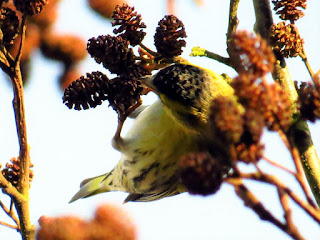Wood Lane is a small Shropshire Wildlife Trust Reserve near Ellesmere. You need to be a member to obtain the codes to access the hides. For its small size it attracts an excellent range of species with water, marshy areas, reeds and adjacent woodland.
Star of the show – and he knew it – was this drake Egyptian Goose. The sexes are similar but with what was obviously a pair present it was clear who was boss. Almost a ‘rag doll’ appearance, so unlikely are the markings.
Here. hauled-out of the water, note the strong legs as well as the large white panel in the wing. (Try and ignore the dead twigs sticking out the top of its head or pretend it has antenna)
Both the white and chestnut in the wing show as it preens.
Here he wanders off. In the UK Egyptian Geese originally escaped from wildfowl collections. There is now a self-sustaining breeding population in many parts of the UK. Pairs have been present in Shropshire for at least 15 years, though numbers remain small.
Here a darker bird touches down – they always make a bit of a splash as despite putting their webbed feet forward it is the long tail that enters the water first.
A line-up of six birds. The distinctive ‘bill raised’ profile is quite different from the more horizontal posture of Shag, though that salt-water specialist is unlikely in Shropshire. Note the left-most bird has white breeding plumes and extended bare skin at the base of the bill. The immature seen earlier is second on the left.
The colour on the back of Lapwings varies with the angle of the light – not as much as shown here. The distinctive pale bird in the middle also shows much brighter legs. I have seen this, or a similar, bird before but cannot for the life of me remember where or when – several years ago I think.
Meanwhile high overhead in the Alders Siskins were busy feeding on the seeds in the cones. A male here with the black crown.
“Are you looking at me?”
Ellesmere
Another duck I had to check with the literature. Should a duck Goldeneye have so much white showing on the flanks? Or is it a moulting first-winter drake? The answer is given away by the yellow tip to the bill – it is a duck Goldeneye. So it must have unusually bright flanks.
Perhaps from the pre-roost at Wood Lane this Cormorant shows how easy it is to land on a tree with webbed feet.
Or perhaps not!
One feature I use to spot this species at long range is that the extent of white on the wing-tip is almost the same on the underwing as on the upperwing. This shows surprisingly well on flying birds. It is nowhere near so obvious on any other gull species frequently seen in the UK.
(Ed Wilson)


















